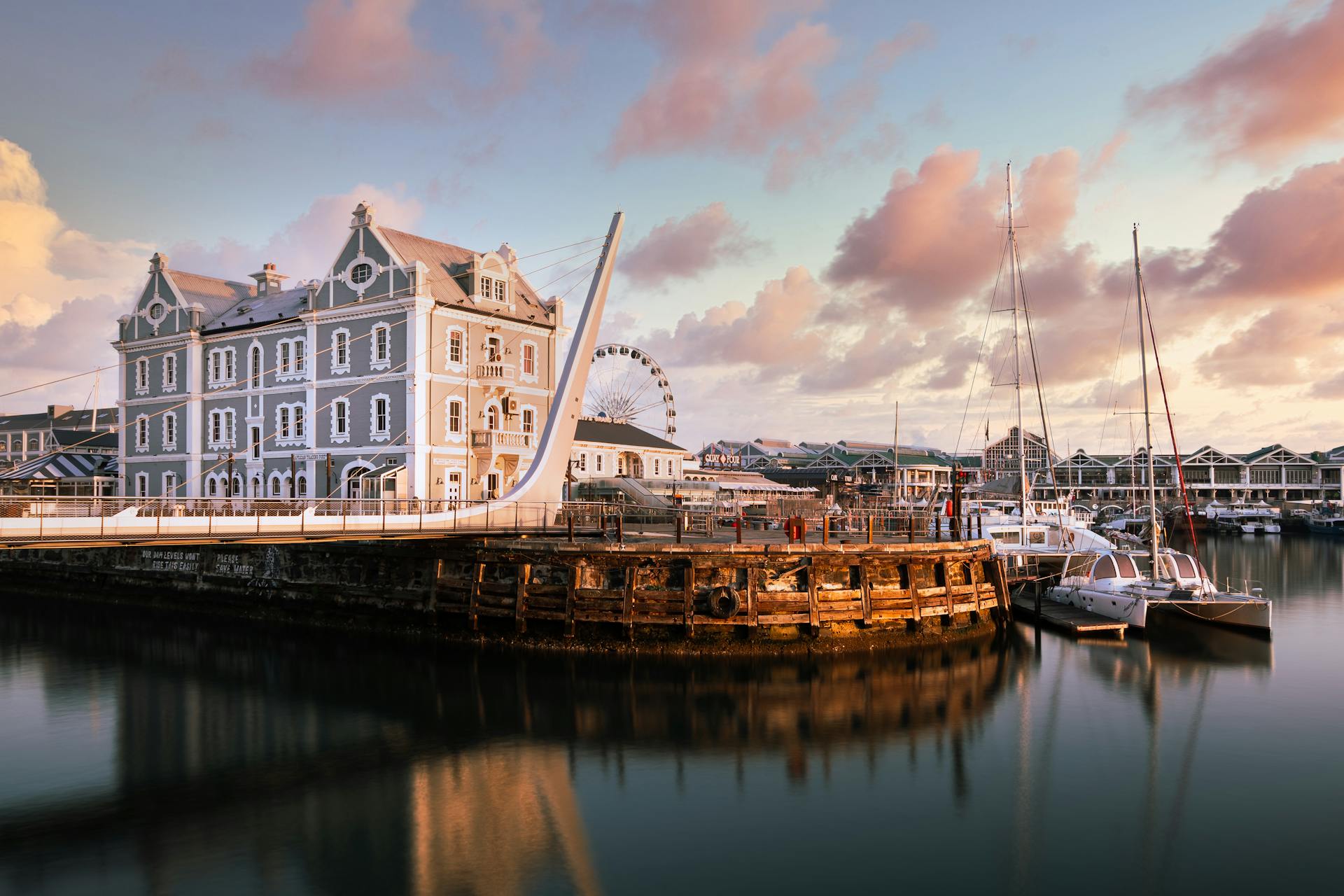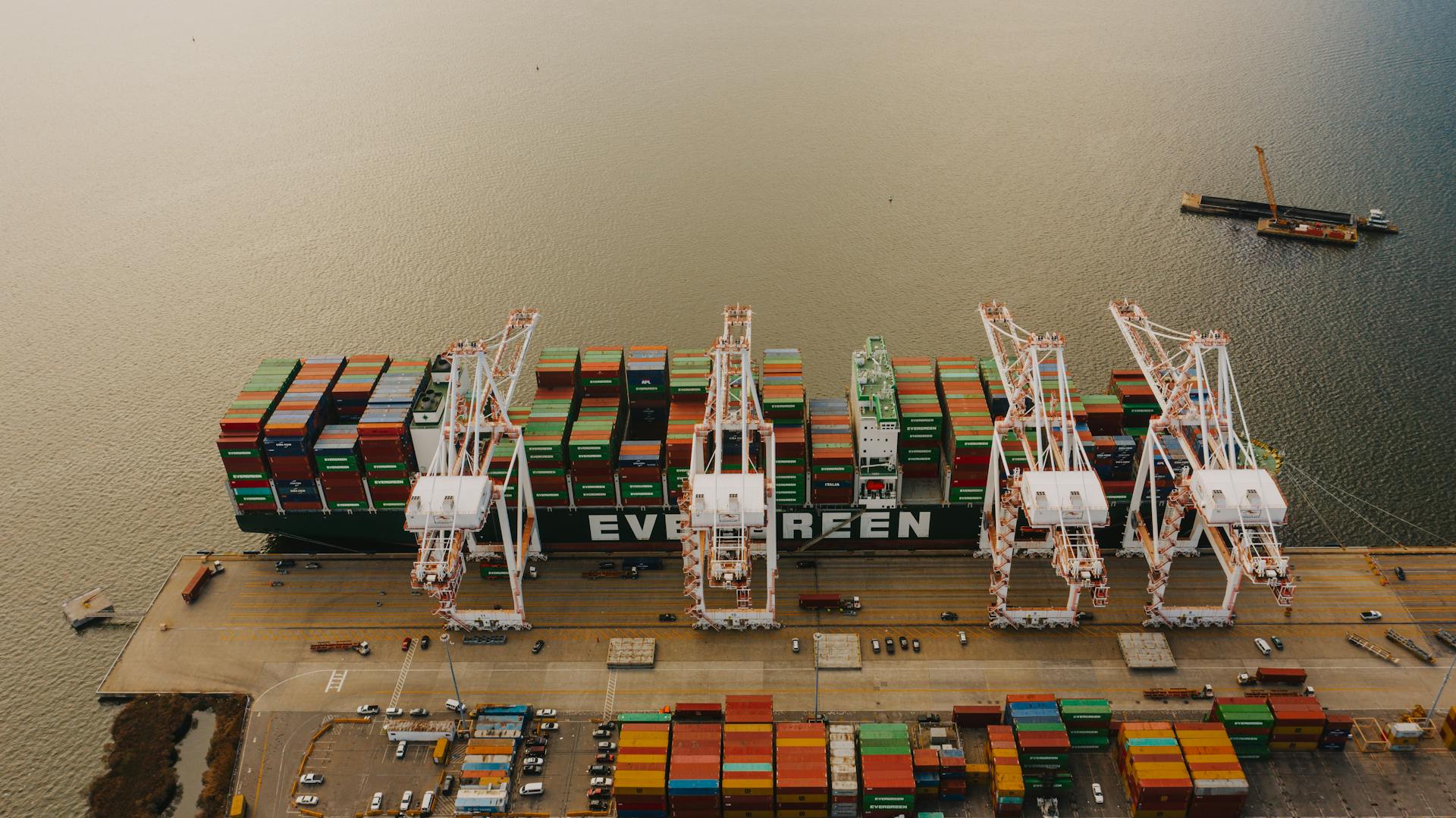
The Port of Cape Town is a vital economic hub, and unlocking its trade potential is crucial for the city's growth. It's the busiest port in South Africa, handling over 2,000 ships per year.
As a major cargo handler, the Port of Cape Town has a significant impact on the country's economy. In fact, it generates over R14 billion in revenue each year, which is a substantial contribution to the nation's GDP.
The port's strategic location at the southern tip of Africa makes it an ideal gateway for trade between Europe, Asia, and Africa. Its proximity to major shipping lanes and trade routes also facilitates the transportation of goods.
Check this out: Cape Town Cruise Port
History and Development
The Port of Cape Town has a rich history that dates back to 6 April 1652 when Jan van Riebeeck established a revictualing station there.
Table Bay, where the port is located, was first explored by earlier explorers in the late 15th century, who called it Table Bay due to its unique geography.
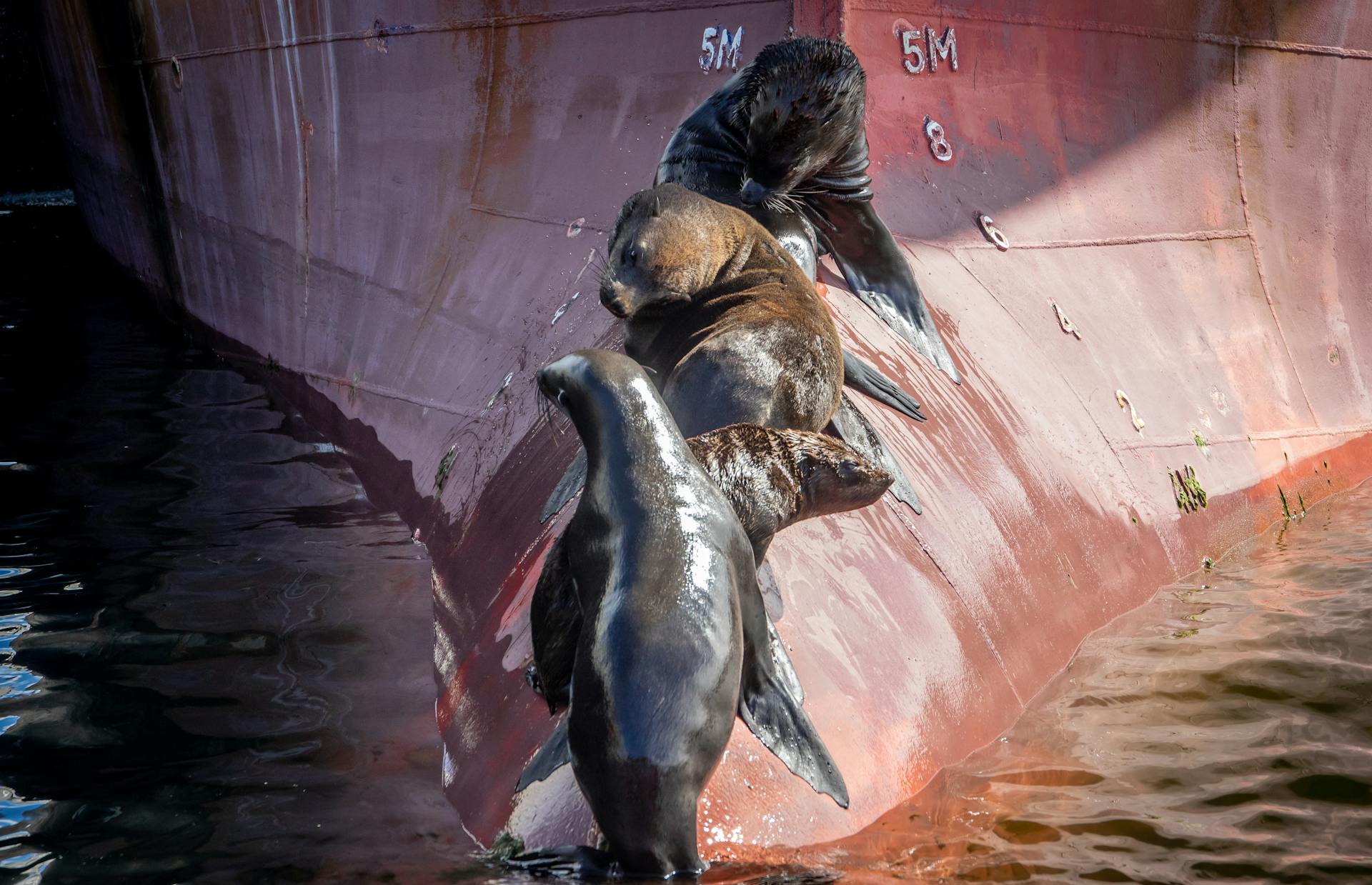
The first harbour construction was a jetty built in 1654 by Jan van Riebeeck, which facilitated the transfer of goods between ships and the shore.
The port's early years were marked by massive shipping losses due to violent winter storms, which led to the closure of Table Bay during winter months.
A vicious storm in 1858 resulted in 30 ships being blown ashore and wrecked, with huge loss of life, prompting Lloyd's of London to decline further insurance on ships in Table Bay during winter.
The British Colonial Government responded by starting the construction of the first breakwater in 1860, which eventually developed into the Victoria and Alfred Basin, the first safe harbour.
A unique perspective: Wooden Structure Where Ships Dock
Operations and Facilities
The Port of Cape Town is a bustling hub of activity, with a range of facilities and services to support the smooth flow of goods and vessels. The port is open 24 hours a day, 7 days a week, and all vessels berthing in the port require a pilot on board.
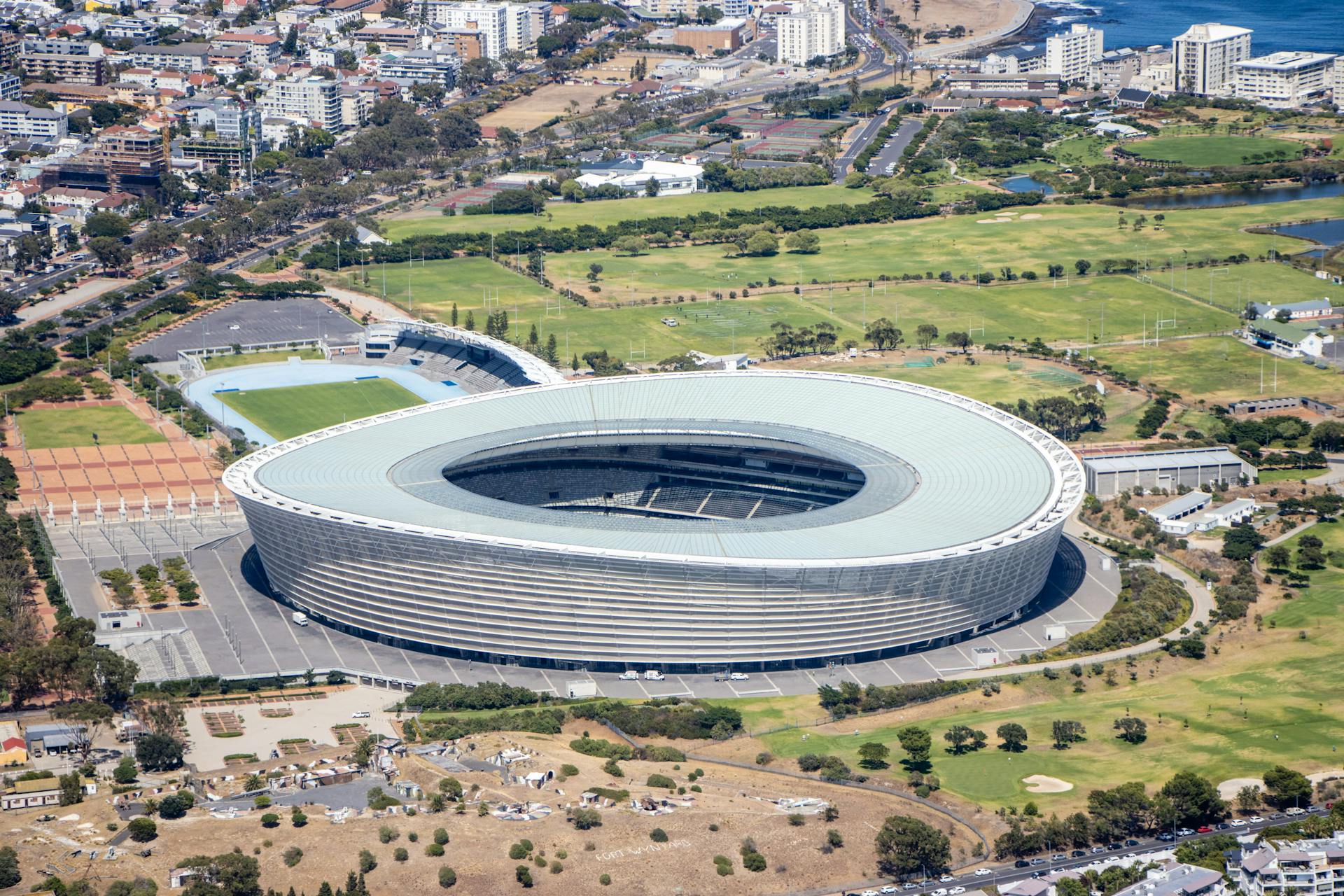
The port has a total of 34 berths, including lay-by berths and ship repair facilities. The Sturrock Dry Dock is the main dry dock, capable of docking vessels with a maximum length of 369.6m and a draft of 14m.
The port's facilities are designed to cater to a wide range of cargo, including fruit, fish, maize, wheat, paper, steel, cement, scrap metal, coal, timber, and vehicles. The Multipurpose Terminal located in Duncan Dock can handle commodities such as fruit, fish, and other general cargo.
Here's a breakdown of the port's facilities:
The port's workboat, two twin-screw pilot boats, four launches, and an anti-pollution boat are all available to support the smooth operation of the port.
Port Facilities
The Port of Cape Town has a total of 34 berths, including lay-by berths and ship repair facilities. Each berth is equipped to handle a variety of cargo, from containers to bulk goods.
Sturrock Dry Dock is the main dry dock, capable of docking vessels with a maximum length of 369.6m, width of 45.1m, and draft of 14m. This impressive dry dock is situated at Duncan Dock.
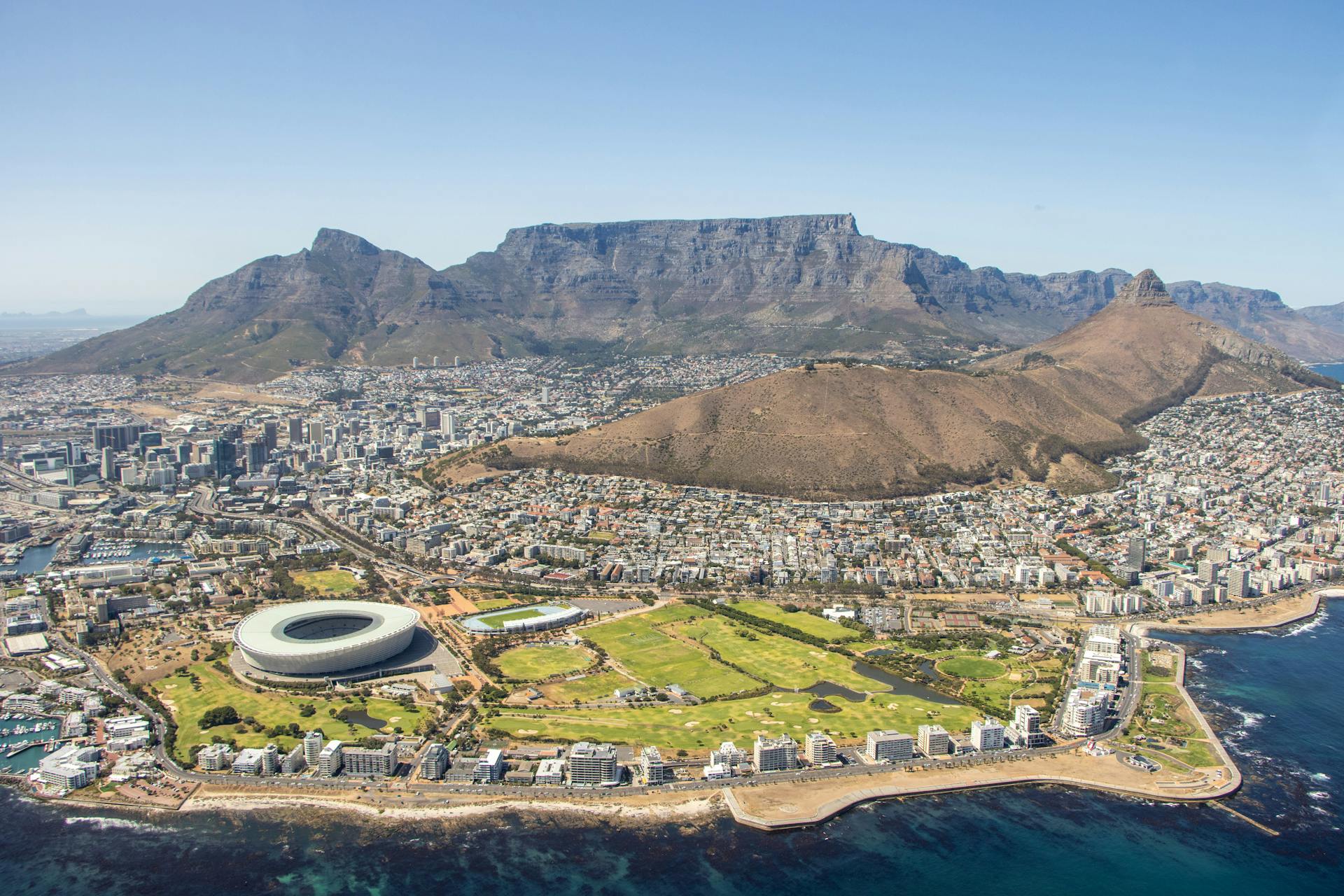
Robinson Dry Dock has an overall docking length of 161.2m and depth of 7.9m. It's an important facility for smaller vessels and those requiring more specialized repairs.
The port has six deepsea berths, with a ground slot capacity of 5,250 slots and 1,500 reefer points. This allows for efficient handling of a wide range of commodities, including fruit, fish, maize, and steel.
Cold storage facilities are available for perishable products like fruit, fish, and meat. In addition, a dedicated cold store for fish products is available at Duncan Dock.
The port has several bunkering points to supply marine fuel oil, gas oil, and blends. This is a critical service for vessels requiring fuel while in port.
Here's a breakdown of the port's dry dock repair facilities:
The port's dry dock repair facilities are operated by private companies, offering a range of services including ship repair, engineering, refrigeration, and cleaning.

The port is open 24 hours a day, 7 days a week, and all vessels require a pilot on board. Transfer is typically by pilot boat, but plans are underway to introduce a helicopter transfer service.
The port has a fleet of specialized vessels, including tugs, launches, and workboats, to support vessel operations and maintenance.
Port Construction
The Port of Cape Town is undergoing significant expansion to become a regional shipping hub. This transformation is being led by the Cape Town Container Terminal (CTCT) expansion project, which aims to increase the terminal's capacity twofold.
The project's budget is a substantial R5.4 billion, equivalent to approximately $780 million. Design work on the project began in December 2007, with the goal of creating a more efficient and larger terminal.
Construction on the project broke ground in January 2008, with a specific focus on extending berths 601, 602, 603, and 604. ZAA was subcontracted to provide an alternative design for this extension.
A significant financial boost came in November 2009, when Agence Francaise de Developpement agreed to grant the project a $285 million credit facility over 15 years.
For your interest: Cape Town Economy
Equipment

Cape Town's port has a heavy lift floating crane with a safe working load of 200t. It's a game-changer for handling large equipment and cargo.
The port also boasts a synchrolift that can accommodate vessels up to 61m long, 15m beam and 1,806t weight. That's impressive considering the size and weight of some of the ships that come through.
The container terminal has a fleet of post-panamax gantry cranes, which are designed to handle the largest containers that come through the port. These cranes are a crucial part of the port's operations.
Stakeholders and Engagement
The Port of Cape Town has a strong focus on stakeholder engagement, which is essential for its smooth operation.
The Port of Cape Town Stakeholder Engagements are held annually, bringing together representatives from across the port logistics value chain, experts in maritime transport as well as the senior leadership of Transnet.
Stakeholder engagement is crucial for the Port of Cape Town to stay informed about the needs and concerns of all parties involved in the port's operations.
Representatives from the port logistics value chain, including maritime transport experts and Transnet's senior leadership, attend the annual stakeholder engagements.
Broaden your view: Maritime Museum Rotterdam
Working Hours and Schedules

The Port of Cape Town operates 24 hours a day, 365 days a year for emergencies and handling of ships at the Port Control.
Port Control is available 24/7, which is reassuring for vessels that need assistance at any time.
Cartage services are also available 24 hours a day, making it easy to transport goods and containers around the clock.
However, Breakbulk services have more limited hours, operating from 6am to 10pm, Monday to Friday.
Containers, on the other hand, can be handled 24 hours a day, 362 days a year, with the only exceptions being January 1st, May 1st, and December 25th.
Office hours, including Revenue, are from 8am to 4:30pm, Monday to Friday, excluding public holidays.
Tankers have restrictions on berthing and unberthing, only allowed during daylight hours, but vessels with double hulls may be exempt under certain circumstances.
Note: Public holidays are excluded from Office hours.
Strategic Importance and Future
The Port of Cape Town plays a vital role in the region's economy and trade. It's a critical node in the maritime routes between Europe, Asia, and the Americas, making it a key player in global commerce.

This strategic location contributes significantly to the local and national economy through trade, tourism, and employment. The port is also a major draw for tourists, thanks to its proximity to Cape Town CBD and popular tourist attractions.
The port's expansion plans are ongoing and planned, aimed at increasing capacity and efficiency. These projects include berth upgrades, deeper channels, and enhanced technology to support South Africa's maritime and economic activities.
Strategic Importance
This location is a critical node in the maritime routes between Europe, Asia, and the Americas. Its strategic importance is a result of its position on these trade routes.
It's a significant contributor to the local and national economy through trade, tourism, and employment. This makes it a vital part of the regional economic landscape.
The proximity to Cape Town CBD and tourist attractions enhances its role in cruise tourism. This is a significant advantage for the local economy.
Here are some key statistics that highlight its economic contribution:
- Trade Routes: Critical node in the maritime routes between Europe, Asia, and the Americas.
- Economic Contribution: Significant contribution to the local and national economy through trade, tourism, and employment.
- Tourism: Proximity to Cape Town CBD and tourist attractions enhances its role in cruise tourism.
Future Developments:

Cape Town Port is constantly evolving to meet the growing demands of South Africa's maritime and economic activities.
Expansion plans are underway to increase capacity and efficiency, with ongoing and planned projects to upgrade berths, deepen channels, and implement enhanced technology.
These upgrades will enable the port to handle more cargo and vessels, further solidifying its position as a key player in the region.
Berth upgrades are a key component of the expansion plans, allowing for larger and more efficient vessels to dock and unload their cargo.
A deeper channel will also be constructed, enabling larger ships to navigate the port with ease.
Enhanced technology will also be implemented to streamline operations and improve safety.
These upgrades will have a significant impact on the port's ability to handle cargo and vessels, making it an even more attractive option for businesses and traders.
In summary, the future of Cape Town Port looks bright, with ongoing and planned projects set to increase capacity and efficiency.
A fresh viewpoint: Post Town
Frequently Asked Questions
What is the name of the port in Cape Town?
The port in Cape Town is officially known as CAPE TOWN Port, with the UN/LOCODE ZACPT. It's also commonly referred to as CAPETOWN.
Who owns Cape Town Port?
The Port of Cape Town is owned by Transnet National Ports Authority, a leading ports and rail company in South Africa.
Do cruise ships go to Cape Town?
Yes, cruise ships do visit Cape Town, with most docking at Table Bay Harbour near the Victoria & Alfred Waterfront.
What is the port code for Cape Town South Africa?
The port code for Cape Town, South Africa is ZACPT. This is the official LOCODE assigned to the seaport.
Sources
- https://en.wikipedia.org/wiki/Port_of_Cape_Town
- https://www.westerncape.gov.za/edat/port-cape-town-logistics
- https://www.waterfront.co.za/business/marine/the-harbour/
- https://www.ship-technology.com/projects/port-cape-tpwn/
- https://ports-directory-ctbrh2f9d6h4ddhf.eastus2-01.azurewebsites.net/ports/port/cape-town
Featured Images: pexels.com
